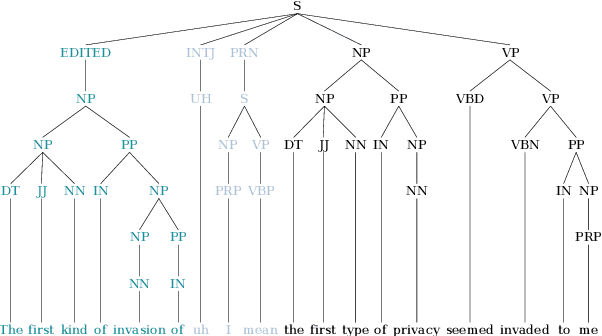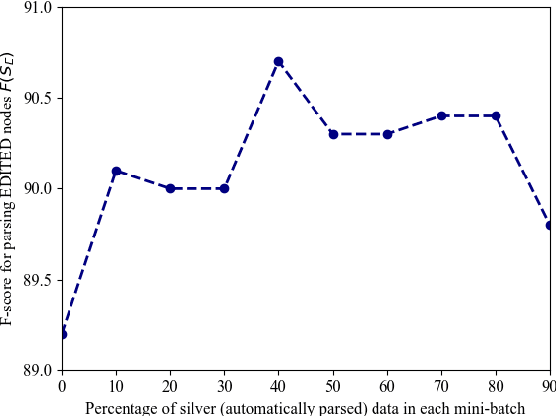Improving Disfluency Detection by Self-Training a Self-Attentive Model
Paper and Code
Apr 29, 2020



Self-attentive neural syntactic parsers using contextualized word embeddings (e.g. ELMo or BERT) currently produce state-of-the-art results in joint parsing and disfluency detection in speech transcripts. Since the contextualized word embeddings are pre-trained on a large amount of unlabeled data, using additional unlabeled data to train a neural model might seem redundant. However, we show that self-training - a semi-supervised technique for incorporating unlabeled data - sets a new state-of-the-art for the self-attentive parser on disfluency detection, demonstrating that self-training provides benefits orthogonal to the pre-trained contextualized word representations. We also show that ensembling self-trained parsers provides further gains for disfluency detection.
 Add to Chrome
Add to Chrome Add to Firefox
Add to Firefox Add to Edge
Add to Edge